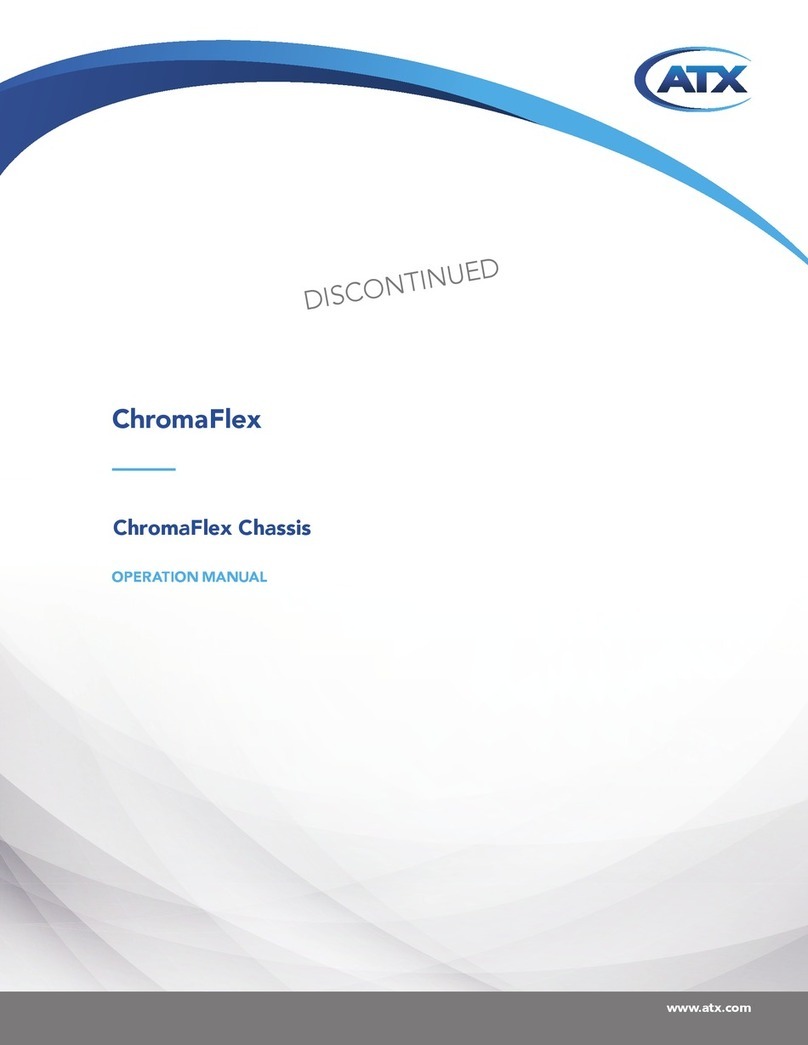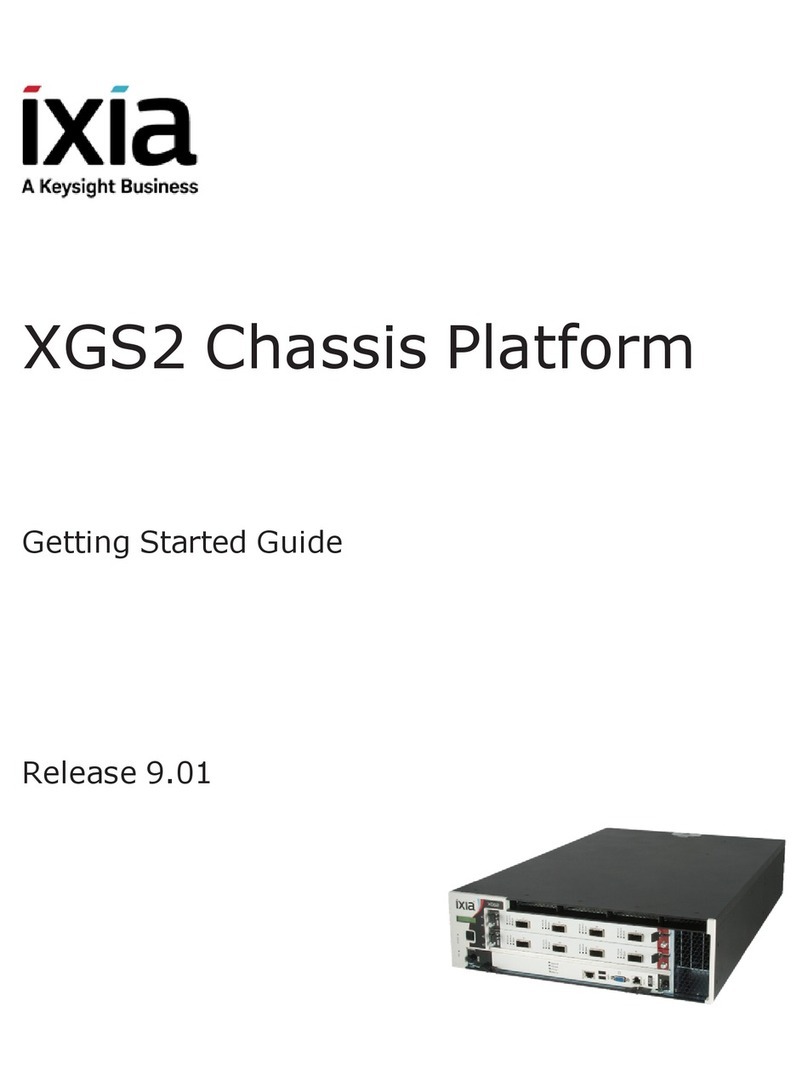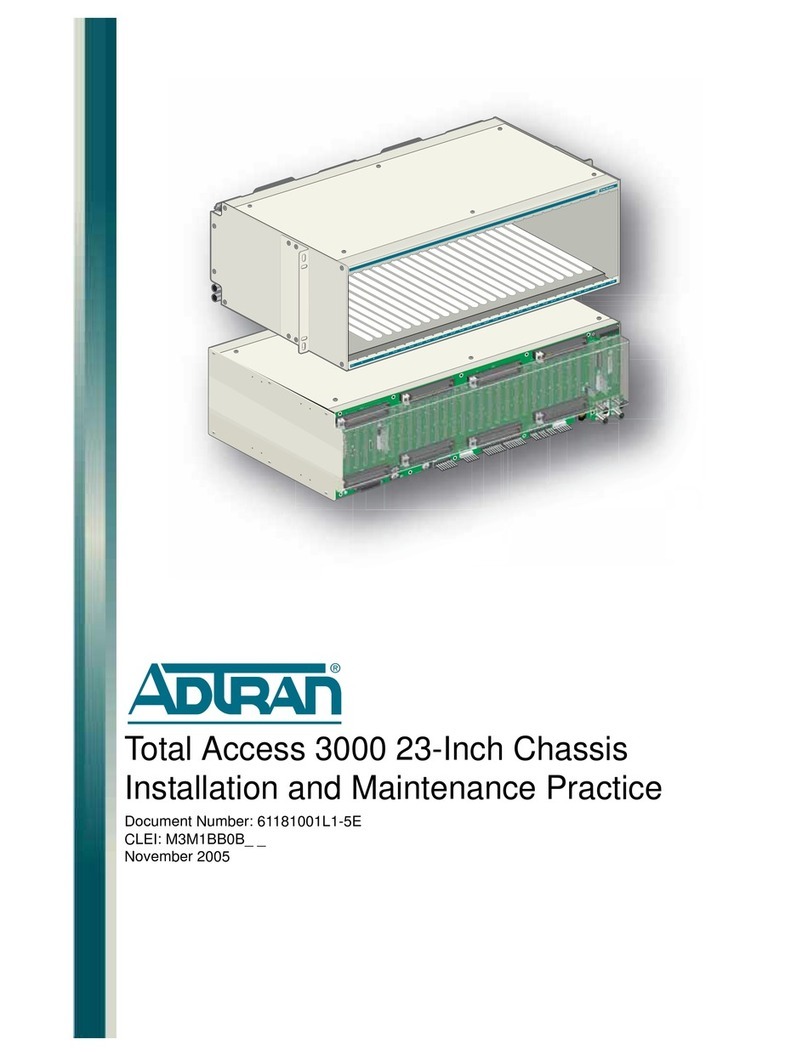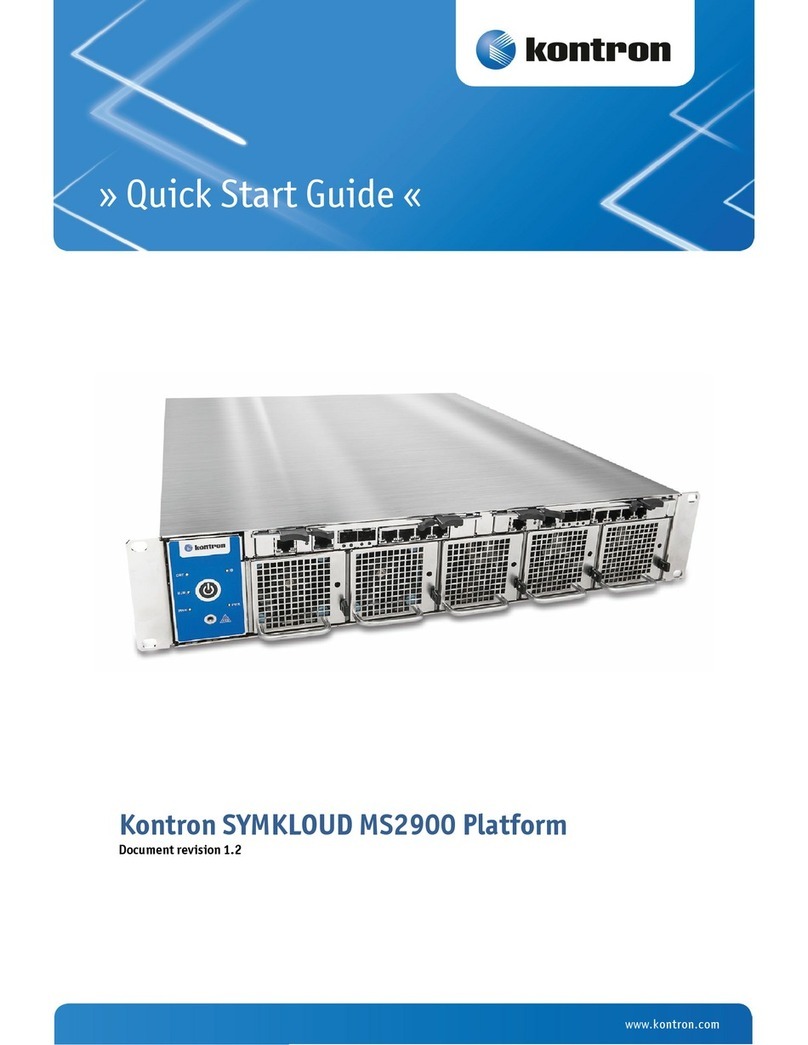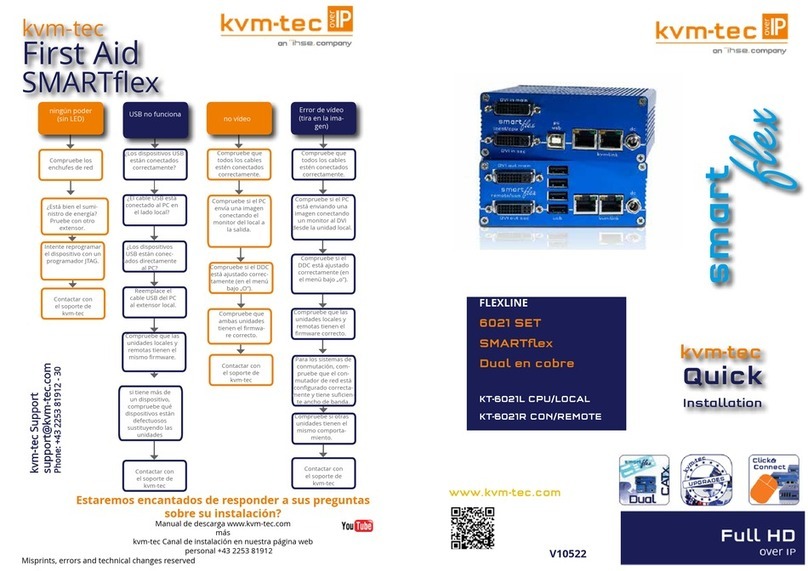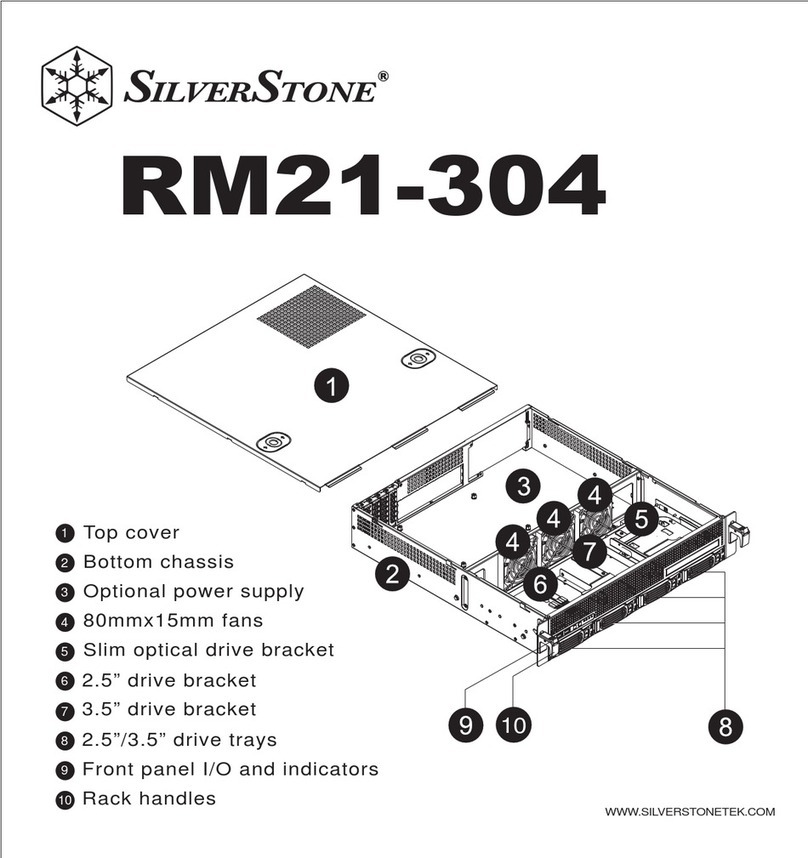ATX TranScend User manual

HARDWARE INTERFACE MANUAL
TranScend Chassis
www.atxnetworks.com
www.atxnetworks.com

Products or features contained herein may be covered by one or more U.S. or foreign patents. Microsoft®Windows®and other non-ATX product and company names in this manual are the property of
their respective companies.
Although every effort has been taken to ensure the accuracy of this document it may be necessary, without notice, to make amendments or correct omissions.
Specications subject to change without notice.

TranScend Chassis – Hardware Interface Manual iii
TABLE OF CONTENTS
1. PRODUCT INTRODUCTION ............................................. 1-1
2. PRODUCT SPECIFICATIONS ............................................ 2-1
2.1 TranScend Chassis Specications ................................... 2-1
2.2 High Sensitivity Quad Receiver: TSD-RRX-4HS-EPL (TSD-RRX-4HS-C)
(No Express Port) ................................................. 2-1
2.3 Standard Sensitivity Quad Receiver: TSD-RRX-4S-C ..................... 2-2
2.4 Quad Return Stacker: TSD-REM-RF4-XX-C or TSH-REM-RF4-XX-C ........ 2-2
2.5 Quad Return Destacker: TSD-REM-RX4-C ............................. 2-3
2.6 RFoG EDFA: TSD-POA-0417-EPL (TSD-POA-0418-SC) .................. 2-3
2.7 Optical Switch: TSD-SW-C ......................................... 2-4
3. PRODUCT INSTALLATION .............................................. 3-1
3.1 Unpacking & Inspecting a New Unit ................................... 3-1
3.2 What To Do About Physical Damage .................................. 3-1
3.3 What To Do About Concealed Damage ................................ 3-1
3.4 How To Return Equipment .......................................... 3-1
3.5 Installation of the Equipment ........................................ 3-1
4. OPERATION OF THE TRANSCEND CHASSIS .............................. 4-1
4.1 LED Color Codes ................................................. 4-1
4.2 Plug-in LED Denitions............................................. 4-2
5. PUSHBUTTON OPERATIONS ............................................ 5-1
5.1 Philosophy of Button Operations ..................................... 5-1
5.1.1 Individual Button Operations ........................................ 5-1
5.1.2 Combination Button Operations ..................................... 5-2
6. FRONT PANEL LCD DISPLAY............................................ 6-1
6.1 Menu Tree Structure ............................................... 6-1
6.2 High Sensitivity Quad Receiver ...................................... 6-2
6.2.1 Overview ....................................................... 6-2
6.2.2 Menu Operation.................................................. 6-3
6.3 Return Stacker ................................................... 6-5
6.3.1 Overview ....................................................... 6-5
6.3.2 Menu Operation.................................................. 6-5
6.4 Return Destacker ................................................. 6-6
6.4.1 Overview ....................................................... 6-6
6.4.2 Menu Operation.................................................. 6-7
6.5 RFoG EDFA ..................................................... 6-8
6.5.1 Overview ....................................................... 6-8
6.5.2 Menu Operation.................................................. 6-9
6.6 Optical Switch................................................... 6-10
6.6.1 Overview ...................................................... 6-10
6.6.2 Menu Operation..................................................6-11

iv TranScend Chassis – Hardware Interface Manual
7. TROUBLESHOOTING THE TRANSCEND .................................. 7-1
8. PROVISIONING & MONITORING ......................................... 8-1
8.1 Overview........................................................ 8-1
8.2 Craft Line Interfaces .............................................. 8-1
8.2.1 Command Structure .............................................. 8-1
8.2.2 System Commands ............................................... 8-1
8.2.3 Plug-in Commands ............................................... 8-5
8.2.3.1 Common Commands. . . . . . . . . . . . . . . . . . . . . . . . . . . . . . . . . . . . . . . . . . . 8-5
8.2.3.2 High Sensitivity Quad Return Receiver ............................. 8-5
8.2.3.3 PON EDFA. . . . . . . . . . . . . . . . . . . . . . . . . . . . . . . . . . . . . . . . . . . . . . . . . . . 8-6
8.2.3.4 Quad Return Receiver.......................................... 8-7
8.2.3.5 Destacker ................................................... 8-7
8.2.3.6 Stacker ..................................................... 8-8
8.2.3.7 Optical Switch ................................................ 8-9
8.3 Remote Management ............................................. 8-10
8.4 Alarm Contacts .................................................. 8-10
9. MAINTENANCE & REPAIR .............................................. 9-1
10. SNMP ENTERPRISE ATTRIBUTES ....................................... 10-1
11. SERVICE & SUPPORT................................................. 11-1
11.1 Contact ATX Networks .............................................11-1
11.2 Warranty Information ..............................................11-1

PRODUCT INTRODUCTION
TranScend Chassis – Hardware Interface Manual 1-1
PRODUCT INTRODUCTION
1. Product Introduction
The TranScend is a modular chassis (1RU platform) that uses plug-in modules which can elegantly simplify the return path
transport when used in conjunction with the I-HUB platform. This platform supports a variety of advanced products from ATX
to revolutionize the CATV optical access industry. This product is available in either AC or redundant DC (-48V) powering. It
can accommodate up to four plug-in modules. Currently available modules include:
1. High Sensitivity Quad Receiver for RFoG return path with the capability for built-in express ports.
2. Standard Sensitivity Quad Receiver for RFoG applications.
3. Frequency Stacker for upstream aggregation of four streams of 5-42 MHz.
4. Frequency Destacker to convert the four streams back to 5-42 MHz.
5. RFoG EDFA providing up to four ports at 18 dBm with or without express port capability.
6. Optical Switch for path redundancy.
The chassis provides extremely high density and with the express ports built-in, the amount of ber interconnectivity is
greatly reduced. The chassis supports hot-swapping of the modules. A high level of integration in the modules makes the
modules very compact, thereby reducing the power requirements and minimizing heat dissipation. The chassis has a local
RS232 port, a RJ45 for remote Ethernet communication with the unit and an alarm contact port. The LCD display in the front
panel helps the operator to monitor all the modules plugged into the chassis.
The front and rear views of the chassis show the various ports available on TranScend chassis.
Figure 1: Front View - TranScend Chassis
Figure 2: Rear Top View - DC Chassis
Figure 3: Rear Top View - DC Chassis
CHAPTER 1:

PRODUCT INTRODUCTION
1-2 TranScend Chassis – Hardware Interface Manual
This page intentionally left blank.
CHAPTER 1:

PRODUCT SPECIFICATIONS
TranScend Chassis – Hardware Interface Manual 2-1
PRODUCT SPECIFICATIONS
2. Product Specications
2.1 TranScend Chassis Specications
2.2 High Sensitivity Quad Receiver: TSD-RRX-4HS-EPL (TSD-RRX-4HS-C)
(No Express Port)
CHAPTER 2:
SPECIFICATIONS
OPERATING DC VOLTAGE -42 to -56V
OPERATING AC VOLTAGE 90-240V
POWER CONSUMPTION
(Without Modules) 11W
OPERATING
TEMPERATURE
STANDARD 0⁰C to +50⁰C (+32⁰F to +122⁰F)
HARDENED -40⁰C to +65⁰C (-40⁰F to +149⁰F)
STORAGE TEMPERATURE -40⁰C to +85⁰C (-40⁰F to +185⁰F)
DIMENSIONS 1.75”H x 17.0”W x 17.0”D
(4.45H x 43.2W x 43.2D cm)
WEIGHT (Without Modules) < 7.0 lbs (3.2 kg)
SPECIFICATIONS TSD-RRX-4HS-EPL
(TSD-RRX-4HS-C (No Express Port))
FREQUENCY RANGE 5-85 MHz(1)
OPTICAL INPUT LEVEL -18 to -30 dBm
EXPRESS PORT PASSBAND (If Present) 1604-1617nm
EXPRESS PORT INSERTION LOSS 0.3-0.8 dB
EXPRESS PORT REFLECT BAND 1300-1620nm
RF OUTPUT LEVEL (Nominal) 40 dBmV(2)
RF TEST POINT (Relative to Output Level) -20 ± 1 dB
POWER CONSUMPTION 14W
OPERATING TEMPERATURE
STANDARD 0⁰C to +50⁰C (+32⁰F to +122⁰F)
HARDENED -40⁰C to +65⁰C (-40⁰F to +149⁰F)
WAVELENGTH OF OPERATION 1270-1620nm
NPR & DYNAMIC RANGE 30/15 dB(3)
NOTES:
(1) Frequency response for +/1 dB worst case, +/- 0.75 dB typical.
(2) At -20 dBm optical input, with 30% OMI on transmitter.
(3) Specied at -20 dBm optical input level, with a load of 5-42 MHz.

PRODUCT SPECIFICATIONS
2-2 TranScend Chassis – Hardware Interface Manual
2.3 Standard Sensitivity Quad Receiver: TSD-RRX-4S-C
2.4 Quad Return Stacker: TSD-REM-RF4-XX-C or TSH-REM-RF4-XX-C
XX is the ITU Wavelength Channel.
CHAPTER 2:
SPECIFICATIONS
TSD-RRX-4S-C
FREQUENCY RANGE 5-200 MHz(1)
OPTICAL INPUT LEVEL 0 to -20 dBm
EXPRESS PORT PASSBAND (If Present) 1604-1617nm
EXPRESS PORT INSERTION LOSS 0.3-0.8 dB
EXPRESS PORT REFLECT BAND 1300-1620nm
RF OUTPUT LEVEL (Nominal) 40 dBmV(2)(5)
RF TEST POINT (Relative to Output Level) -20 dB
POWER CONSUMPTION 10W
OPERATING TEMPERATURE
STANDARD 0⁰C to +50⁰C (+32⁰F to +122⁰F)
HARDENED -40⁰C to +65⁰C (-40⁰F to +149⁰F)
WAVELENGTH OF OPERATION 1270-1620nm
NPR & DYNAMIC RANGE 40/15 dB(3)(4)
NOTES:
(1) Frequency response for +/1 dB atness worst case, +/- 0.75 dB typical.
(2) At -10 dBm optical input, with 10% OMI on transmitter.
(3) Specied at -10 dBm optical input level, with a load of 5-42 MHz.
(4) Ch. Attn. = 16 dB (factory default setting).
(5) Ch. Attn. = 0.0 dB.
SPECIFICATIONS TSD-REM-RF4-XX-C /
TSH-REM-RF4-XX-C
FREQUENCY RANGE 5-85 MHz(1)
OPTICAL OUTPUT LEVEL 6 dBm
RF INPUT LEVEL 25 dBmV(2)
RF TEST POINT (Relative to Input Level) -20 dB
POWER CONSUMPTION
STANDARD 10W
HARDENED 13W
OPERATING TEMPERATURE
STANDARD 0⁰C to +50⁰C (+32⁰F to +122⁰F)
HARDENED -40⁰C to +65⁰C (-40⁰F to +149⁰F)
WAVELENGTH OF OPERATION ITU nm
NPR & DYNAMIC RANGE 40/10 dB(3)
NOTES:
XX = ITU Wavelength Channel
(1) Frequency response for +/-1 dB worst case, +/- 0.75 dB typical for 5-42 MHz.
(2) For 2.5% OMI on transmitter.
(3) Specied at -7 dBm optical input level, with a load of 5-42 MHz.

PRODUCT SPECIFICATIONS
TranScend Chassis – Hardware Interface Manual 2-3
2.5 Quad Return Destacker: TSD-REM-RX4-C
2.6 RFoG EDFA: TSD-POA-0417-EPL (TSD-POA-0418-SC)
CHAPTER 2:
SPECIFICATIONS TSD-REM-RX4-C
MIN TYP MAX
FREQUENCY RANGE 5-85 MHz(1)
OPTICAL INPUT LEVEL -15 dBm -7 dBm 0 dBm
RF OUTPUT LEVEL 40 dBmV(2)
RF TEST POINT (Relative to Output Level) -20 dB
POWER CONSUMPTION 14W
WAVELENGTH OF OPERATION ITU nm
NPR & DYNAMIC RANGE 40/10 dB(3)
OPERATING TEMPERATURE
STANDARD 0⁰C to +50⁰C (+32⁰F to +122⁰F)
HARDENED -40⁰C to +65⁰C (-40⁰F to +149⁰F)
NOTES:
(1) Frequency response for +/-1 dB worst case, +/- 0.75 dB typical for 5-42 MHz.
(2) For 2.5% OMI at -7 dBm optical input power.
(3) Specied at -7 dBm optical input level, with a load of 5-42 MHz.
SPECIFICATIONS TSD-POA-0417-EPL
(TSD-POA-0418-SC)
MIN TYP MAX
NOISE FIGURE 4.0 dB(1) 4.5 dB(1)
OPTICAL OUTPUT POWER (Without EP) +18 dBm(2) +18.2 dBm(2) +18.5 dBm(2)
OPTICAL OUTPUT POWER (With EP) +17 dBm +17.2 dBm +17.5 dBm
EXPRESS PORT PASSBAND 1544nm 1559nm
EXPRESS PORT INSERTION LOSS 0.3 dB 0.4 dB 0.6 dB
EXPRESS PORT REFLECT BAND 1300nm 1620nm
OPTICAL INPUT POWER LEVEL -6 dBm(3) 4 dBm(3) 10 dBm(3)
OPTICAL TEST POINT LEVEL
(Below Total Output) -21 dB -20 dB -19 dB
POWER CONSUMPTION
STANDARD 15W
HARDENED 18W
AMPLIFICATION WAVELENGTH 1545nm 1562nm
OUTPUT POWER VARIATION OVER
OPERATING TEMPERATURE ± 0.1 dB ± 0.2 dB
OPERATING TEMPERATURE
STANDARD 0⁰C to +50⁰C (+32⁰F to +122⁰F)
HARDENED -40⁰C to +65⁰C (-40⁰F to +149⁰F)
NOTES:
(1) Measured at 0 dBm input power.
(2) When the express port is built-in, the output power requirement in the RFoG network is reduced
& the EDFA O/P is reduced to reect this reduced power requirement.
(3) The amplier will show slight CNR & output power variations over this range of optical input
power. For minimal CNR impact, an input power of +4 dBm is recommended. Ampliers may
shut down at input optical powers below -3 dBm to prevent excessive noise at the output.

PRODUCT SPECIFICATIONS
2-4 TranScend Chassis – Hardware Interface Manual
2.7 Optical Switch: TSD-SW-C
CHAPTER 2:
SPECIFICATIONS TSD-SW-C
MIN TYP MAX
INSERTION LOSS 1.2 dB(1) 1.6 dB(1)
NOMINAL WAVELENGTH RANGE 1525nm 1545nm 1565nm
OPTICAL INPUT POWER LEVEL -10 dBm(2) 15 dBm(2)
SWITCHING THRESHOLD (Settable) -13 dBm(3) +14 dBm(3)
HYSTERESIS ± 0.3 dB
SWITCHING TIME 10ms 15ms
CROSSTALK 50 dB
OPTICAL RETURN LOSS 50 dB
POWER CONSUMPTION 4W
OPERATING
TEMPERATURE
STANDARD 0⁰C to +50⁰C (+32⁰F to +122⁰F)
HARDENED -40⁰C to +65⁰C (-40⁰F to +149⁰F)
NOTES:
(1) Assumes & includes a connector loss 0. 1 dB per end.
(2) This is the range of input powers for ALL the wavelengths in the downstream direction.
(3) The switching threshold can be set from -13 dBm to + 14 dBm.

PRODUCT INSTALLATION
TranScend Chassis – Hardware Interface Manual 3-1
PRODUCT INSTALLATION
3. Product Installation
3.1 Unpacking & Inspecting a New Unit
Before shipment, ATX inspects and packs all the essential items carefully. Nevertheless, damage may occur during
shipment. The carrier assumes full responsibility for a safe delivery of the equipment.
1. Inspect the package for any physical damage.
2. Open the package.
3. Remove any packing material.
4. Inspect the unit for any physical damage.
5. Shake the unit with care, paying attention to any rattling loose parts that may suggest a concealed damage (some
noise due to moving cables is normal).
6. Check for any missing accessories.
When any damage is noticed to the merchandise, please notify customer service (see Service & Support section) and le a
claim with the carrier as noted below.
3.2 What To Do About Physical Damage
Record any evidence of physical damage or loss on the freight bill or receipt and have the carrier’s agent sign it. If you fail
to do so, the carrier may refuse to honor the damage claim. The carrier will supply you with any forms required to le such a
claim.
3.3 What To Do About Concealed Damage
Damage which is not apparent until the unit has been unpacked is termed concealed damage. The contents may have been
damaged due to rough handling even if there is no external evidence. If you should notice damage upon unpacking the unit
you should make a written request for inspection by the carrier’s agent within 10 days of the delivery date. Afterwards le a
claim with the carrier.
3.4 How To Return Equipment
Call customer service (see Service & Support section) for a Return Materials Authorization (RMA) number. You will need the
unit’s serial number, description of the problem, and some shipping information. We must receive the unit within thirty (30)
days from the date a RMA number is issued. If for any reason, you want to ship the unit 30 days after the RMA number has
been issued, you must obtain a new RMA number by calling customer service. Units received without an RMA number or
one with an expired RMA number will not be accepted by our receiving department.
3.5 Installation of the Equipment
Installation of the TranScend chassis is a multi-step process.
Step 1: Install the chassis to the rack with the mounting ears and the screws provided in the package, if they are not
pre-installed.
Step 2: Using the ground lug on the back of the unit, ground the chassis to the rack.
Step 3: (Optional) If you want to monitor the unit using SNMP, connect the LAN cable to the LAN port in the back for
remote monitoring. See section 8.3 for further details about remote management of the unit.
Step 4: (Optional) Connect the alarm cable to the DB9 connector in the back, if you want to monitor the unit using relay
contacts.
Step 5: (AC Unit): Connect the AC power cord from the unit to receptacle of the proper rating after making sure that the
power switch is in OFF position OR, FOR DC UNITS: attach terminal lugs with wires of the proper gauge to the
-48 DC feeds (A and B) in the rear of the chassis, ensuring proper color coding or polarity. Ideally, A and B
feeds should be from independent power sources for redundancy. Connect the other end of the DC wires to the
fuse panel after ensuring that the fuses are pulled. Reversing the polarity will not harm the unit over the
CHAPTER 3:

PRODUCT INSTALLATION
3-2 TranScend Chassis – Hardware Interface Manual
short term, but is to be avoided if possible. Each TranScend chassis unit will draw anywhere from
0.5 Amps to 2.0 Amps (maximum) at -48 Volts, depending on the number of modules plugged, the ambient
temperature, the airow conguration etc. Please ensure that the fuse panel is rated at 3A absolute
minimum for safe operation of the units.
Step 6: Turn the chassis on either by using the switch in the rear of the AC chassis or by plugging in the fuses of
appropriate rating in the case of DC units.
Step 7: (Optional) Using the local console port, set-up the IP address for the unit(s) to be monitored from remote location.
The unit(s) is now set-up to go live.
Step 8: Plug in the required modules from the rear. The chassis is shipped with the blank panels in place. Remove the
blank panel only in the slots where the modules are planned to be plugged. Leave the other panels in place to
ensure efcient air ow in the chassis.
Step 9: Connect the optical ber to the optical port in the rear of the chassis according to the design of the network.
Connect the RF cables as needed by the modules.
CHAPTER 3:

OPERATION OF THE TRANSCEND CHASSIS
TranScend Chassis – Hardware Interface Manual 4-1
OPERATION OF THE TRANSCEND CHASSIS
4. Operation of the TranScend Chassis
A detailed procedure for operating the TranScend chassis and various plug-in modules is described in this section. The
menu operation of the plug-in modules is also described in this section. These modules include:
1. High Sensitivity Quad Receiver
2. Standard Sensitivity Quad Receiver
3. Return Stacker
4. Return Destacker
5. RFoG EDFA
6. Optical Switch
There are nine front panel LEDs, one indicates the chassis power supply status and four sets of two each indicate the status
of the four plug-in units. The number labeled on the front panel corresponds to the slot identication; 1 on the most left and 4
on the most right (closest to power switch) when facing the rear of the chassis.
4.1 LED Color Codes
There are four possible colors of LEDs. They are observed during the following conditions.
Off: Indicates the monitored function is unavailable. This is also observed temporarily during power on LED test.
Example #1: Only slot 1 and slot 2 have plug-in units. The LEDs for slot 3 and slot 4 are off.
Example #2: The High Sensitivity Quad Return Receiver is detected in slot 1; the RF LED for slot 1 is turned off since
RF detection is not available in this unit.
Green: Indicates the monitored function is healthy. This is also temporarily observed during power on LED test.
Example #1: The High Sensitivity Quad Return Receiver is detected in slot 1, and the OPT LED for slot 1 is green which
indicates the monitored level of all four optical power receivers in slot 1 are within normal operating range.
Amber: Indicates the monitored function is in minor alarm condition. This is also temporarily observed during power on LED
test.
Example #1: The High Sensitivity Quad Return Receiver is detected in slot 1, and the OPT LED for slot 1 is amber
which indicates the level of any one or more of the four optical powers received in slot 1 are in minor alarm range. The
minor alarm is triggered if the monitored level is between the high and high-high or low and low-low thresholds.
Red: Indicates the monitored function is in major alarm condition. This is also observed temporarily during power on LED
test.
Example #1: The High Sensitivity Quad Return Receiver is detected in slot 1, and the OPT LED for slot 1 is red which
indicates the level of any of the four optical powers received in slot 1 are within major alarm range. The major alarm is
triggered if the monitored level is beyond the high-high or low-low thresholds.
Figure 4: Generic Alarm and LED Table
CHAPTER 4:

OPERATION OF THE TRANSCEND CHASSIS
4-2 TranScend Chassis – Hardware Interface Manual
4.2 Plug-in LED Denitions
High Sensitivity Quad Return Receiver
The High Sensitivity Quad Return Receiver detects the alarms and reects them on the front panel LEDs based on the
following schema.
LED Location Trigger Events
Top Optical Receive Power
Module Temperature
Bottom Disable
Example #1: The module temperature and optical receive power on channel #1, #2 are normal and the channel #3 is
minor low, but the channel #4 is major low-low. The top LED associated with the slot shall be observed as “red”, since
this is the worst case scenario for any of the observed parameters. The top LED may show green regardless of the
real-time alarm status if the per channel alarm enable switch is set as “OFF”.
Standard Sensitivity Quad Return Receiver
The Quad Return Receiver detects the alarms and reects them on the front panel LEDs based on the following schema.
LED Location Trigger Events
Top Optical Receive Power
Module Temperature
Bottom Software Version 2.6 and Before - Green
Software Version 2.7 and Later - Disable
Example #1: The module temperature is normal, but optical receive power is major low-low. The top LED associated
with the slot shall be observed as “red”.
PON EDFA
The PON EDFA detects the alarms and reects them on the front panel LEDs based on the following schema.
LED Location Trigger Events
Top Optical Input Power
Optical Output Power
Module Temperature
Bottom Disable
Example #1: The module temperature and optical output power is normal, but the optical input power is at a level that
indicates a major alarm. The top LED associated with the slot shall be observed as “red”.
Destacker
The Destacker detects the alarms and reects them on the front panel LEDs based on the following schema.
LED Location Trigger Events
Top Optical Power
Module Temperature
Bottom Synthesizer Lock State
Example #1: The module temperature is normal, but optical power is major low-low. The top LED associated with the
slot shall be observed as “red”.
Stacker
The Stacker detects the alarms and reects them on the front panel LEDs based on the following schema.
LED Location Trigger Events
Top Optical Power
Module Temperature
Bottom Synthesizer Lock State
CHAPTER 4:

OPERATION OF THE TRANSCEND CHASSIS
TranScend Chassis – Hardware Interface Manual 4-3
Example #1: The module temperature is normal, but optical power is major low-low. The top LED associated with the
slot shall be observed as “red”.
Optical Switch
The Optical Switch detects the alarms and reects them on the front panel LEDs based on the following schema.
LED Location Trigger Events
Top Primary and Secondary Optical Input Power
Switch Alarm
Module Temperature
Bottom Disable
Example #1: The module temperature is normal, but primary optical power is major low-low. The top LED associated
with the slot shall be observed as “red”.
CHAPTER 4:

OPERATION OF THE TRANSCEND CHASSIS
4-4 TranScend Chassis – Hardware Interface Manual
CHAPTER 4:
This page intentionally left blank.

PUSHBUTTON OPERATIONS
TranScend Chassis – Hardware Interface Manual 5-1
PUSHBUTTON OPERATIONS
5. Pushbutton Operations
There are ve pushbuttons located at the front panel of chassis. They are designated as “Up” with an upper arrow indicator,
“Right” with a right arrow indicator, “Left” with a left arrow indicator, “Down” with a down arrow indicator and “Select” as the
center button.
5.1 Philosophy of Button Operations
5.1.1 Individual Button Operations
Up: The cursor moves up one line.
Down: The cursor moves down one line.
Right: Cycle through the available options for the line where cursor is located.
If the menu is for read-only attribute, the display shows the next available interface.
Example #1: If the current display is “#1 Optical Power”, then pressing the right button will display the “#2 Optical
Power”.
Example #2: If the menu is for the quantitative write attributes, the “Right” button increases the value.
When in the “Gain Setting Menu”, the cursor displays Gain (steps): 1, then pressing the right button increments the gain
steps and hence Gain (steps): 2 shall be displayed after the operation.
Left: Cycle through the available options for the line where cursor is located.
If the menu is for read-only attribute, the display shows the next available interface.
Example #1: If the current display is “#2 Optical Power”, then pressing the left button will display “#1 Optical Power”.
Example #2: If the menu is for the quantitative write attributes, then left button press operation decreases the value.
When in the “Gain Setting Menu”, the cursor displays Gain (steps): 3, then pressing the left button will decrease the
gain steps and hence Gain (steps): 2 shall be displayed after the operation.
Select: There are multiple meanings to the select button.
1. Select to execute the action where the cursor is located.
Example #1: If the cursor is located at the “Prev menu” line, the display shall change to the NEXT higher menu
after the “Select” button is pressed once.
2. Select to commit the option.
Example #1: In the “Gain Setting Menu”, if the cursor is located on the “Sel Ch: 1” line, the channel #1 shall be
used for gain adjustment after “Select” button is pressed.
NOTE: Only after pressing the Select button, the gain settings option is operated on the selected
channel.
CHAPTER 5:
Right
Up
Down
Left
Select

PUSHBUTTON OPERATIONS
5-2 TranScend Chassis – Hardware Interface Manual
3. Select to commit the setting to NVRAM.
Example #1: In the “Gain Setting Menu”, if cursor is on “Save: No (17)”, user must toggle the right or left button
to change the option to “Yes”. Then press “Select” to commit the value, 17, in the bracket into the NVRAM.
NOTE: Only if the value is committed into NVRAM, the chassis will use the selected gain level next
time the chassis recovers from power cycle .
5.1.2 Combination Button Operations
The combination button operations are unique to TranScend chassis. Each combination operation is de ned strictly for their
speci c usage as the following de nition.
Up+Down: When pressing and holding the Up+Down button simultaneously when traversing the slot menu, the front panel
displays current slot number. The front panel display will restore back to the previous display once the button combination is
released.
Example #1: User is within the “Status Menu” of slot #1, press and hold the Up and Down buttons, the front panel
displays “Current Slot: 1”. The “Status Menu” returns after releasing the Up and Down button combinations.
CHAPTER 5:

FRONT PANEL LCD DISPLAY
TranScend Chassis – Hardware Interface Manual 6-1
FRONT PANEL LCD DISPLAY
6. Front Panel LCD Display
6.1 Menu Tree Structure
The TranScend chassis LCD menu is structured into bi-level trees. The top level is system related information and the
second level is plug-in related information. The top level contains the menu for second level, but each has its own menu
structure.
Level 1 Level 2 Level 3
Greeting Slot
Chassis Model
Hardware Version
Software Version
Serial Number
Prev Menu
Alarm Power Supply
Fan
Prev Menu
Prev Menu
Table 1: TranScend Front Panel System Menu Overview
TranScend chassis displays the greeting message upon chassis power up.
Greeting:
Press “Select” button to go into the system menus. The entries in system menus are described as follows:
Slot:
This displays the detected plug-in card type or “Empty” if none is detected. Press “Right” or “Left” button to cycle
through available slots. Press “Select” to show the slot communication status. If the communication with slot establishes
successfully, the display will go into the second level plug-in menu. Keep in mind that the slot numbering scheme is 1, 2, 3,
4, when going from the LEFT when you are facing the rear of the chassis.
Chassis:
Displays all system related information.
Model: Displays the chassis’ model name.
HW Ver: Displays the hardware version information of TranScend chassis.
SW Ver: Displays the software version information of TranScend chassis.
Ser #: Displays the serial number of TranScend chassis.
Alarm:
Display all system related alarm status.
Pwr Sply: Displays the health of chassis power supply.
Fan: Displays the collective health of the chassis fans.
Prev Menu:
Pressing “Select” will bring the Greeting Message screen back.
CHAPTER 6:

FRONT PANEL LCD DISPLAY
6-2 TranScend Chassis – Hardware Interface Manual
NOTE: “Prev Menu” exists in all menu trees AT THE VERY BOTTOM. When you see it, place the
cursor on this line and press the “Select” button to go back to the previous menu.
The plug-in menu displays are driven by the card type. Each model provides its own display structure. In any sub menu,
press “Select” on the Prev Menu line to return to the previous menu one level up.
6.2 High Sensitivity Quad Receiver
6.2.1 Overview
The High Sensitivity Quad Receiver is a TranScend plug-in meant to receive return path signals in the 5-85 MHz frequency
range in RFoG networks. In these networks, the return path signal from the home ONU (Optical Network Unit) traverses an
optical splitter (typically a 1x32 or a cascade of 1x4 and 1x8 splitters) in the reverse direction. The wavelength of the return
path signal is typically 1610nm. In units that have an express port built-in, the receiver will work only in the 1610nm window
(1610 +/- 8 nm); in other units the return path wavelength has a relatively minor impact on the receiver performance through
changes in the responsivity of the photodiode.
Figure 5: Front View of the High Sensitivity Quad Receiver
Figure 6: Isometric View of the High Sensitivity Quad Receiver
CHAPTER 6:
Other manuals for TranScend
1
Table of contents
Other ATX Chassis manuals
Popular Chassis manuals by other brands

BELL LABS INNOVATIONS
BELL LABS INNOVATIONS Lucent Technologies Stinger MS+ Getting started guide
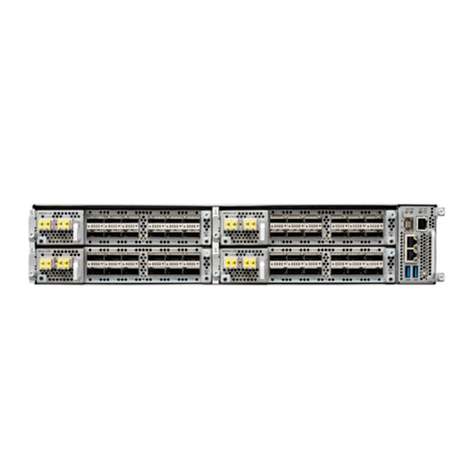
Cisco
Cisco NCS 1004 Hardware installation guide

AIC
AIC RSC-2KT user manual
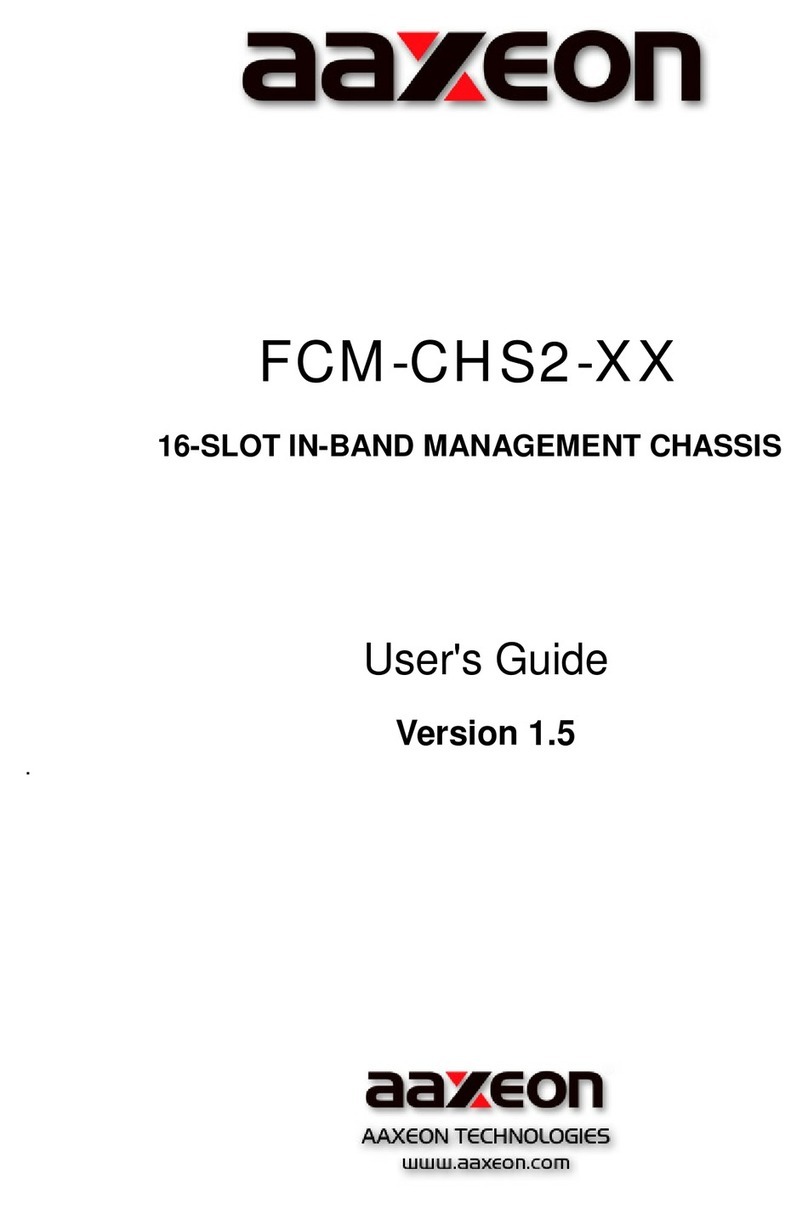
AAxeon
AAxeon FCM-CHS2 Series user guide
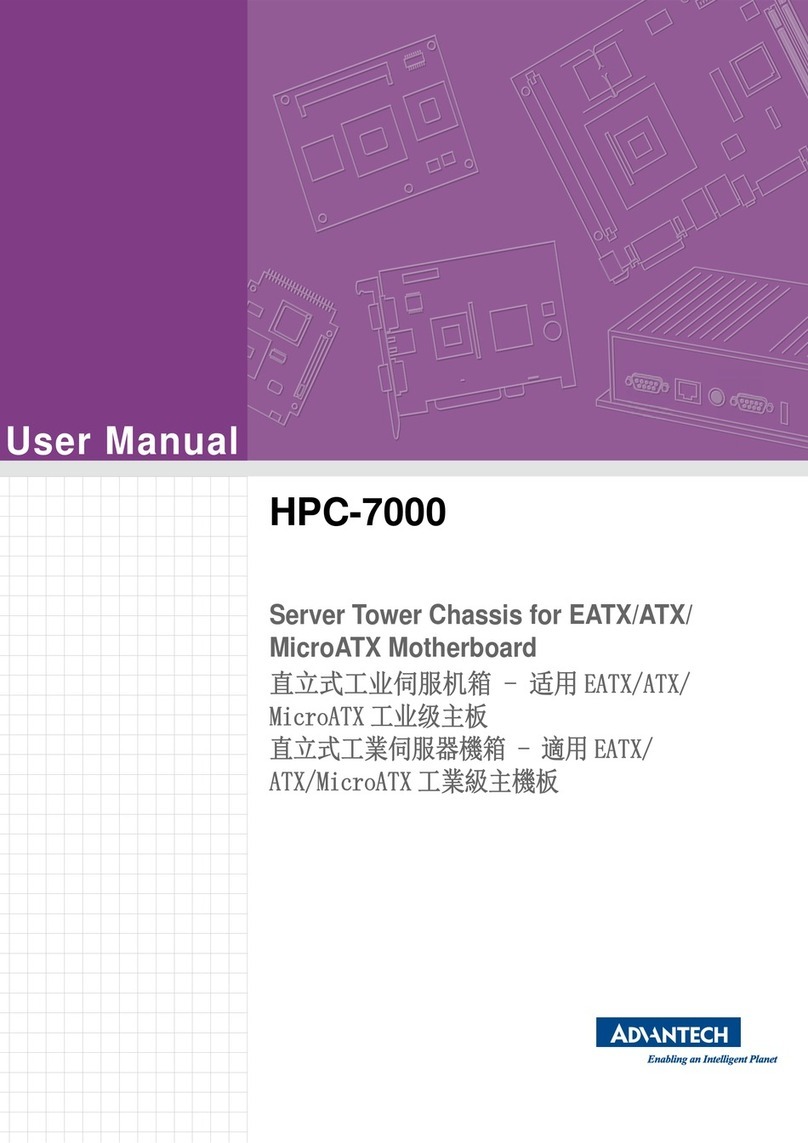
Advantech
Advantech HPC-7000 user manual

National Instruments
National Instruments cDAQ-9179 user manual
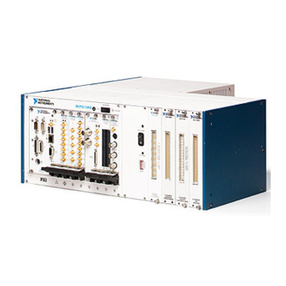
National Instruments
National Instruments NI PXI-1050 user manual

Anritsu
Anritsu MT1810A Operation manual
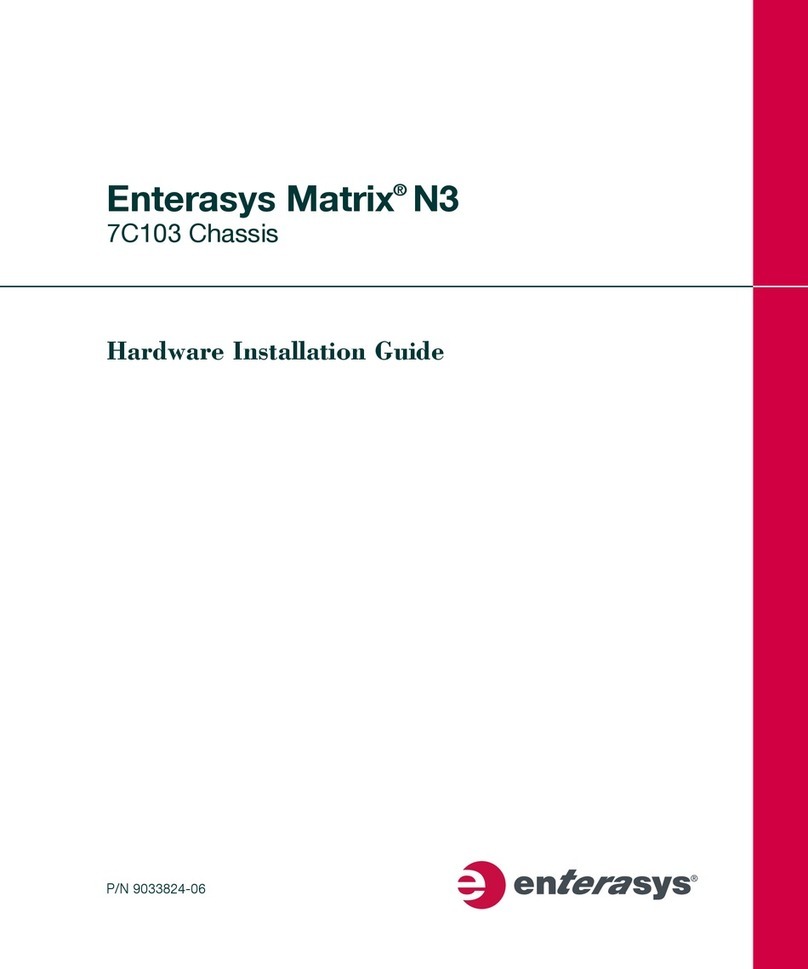
Enterasys
Enterasys Matrix N3 7C103 Hardware installation guide
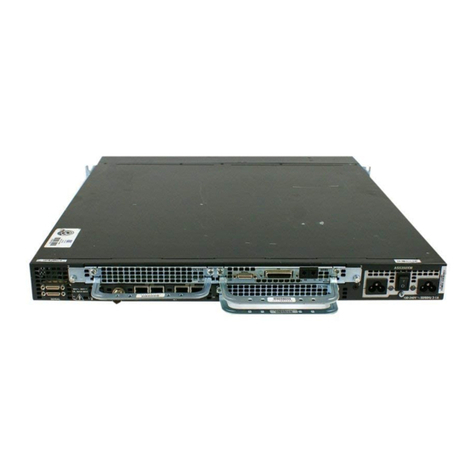
Cisco
Cisco AS5350XM installation guide
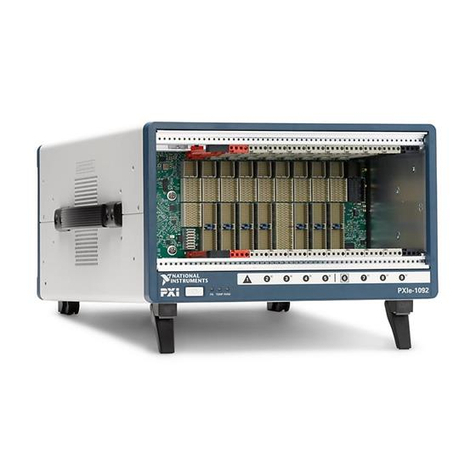
National Instruments
National Instruments PXIe-1092 user guide

Powerware
Powerware Expansion Chassis user guide

